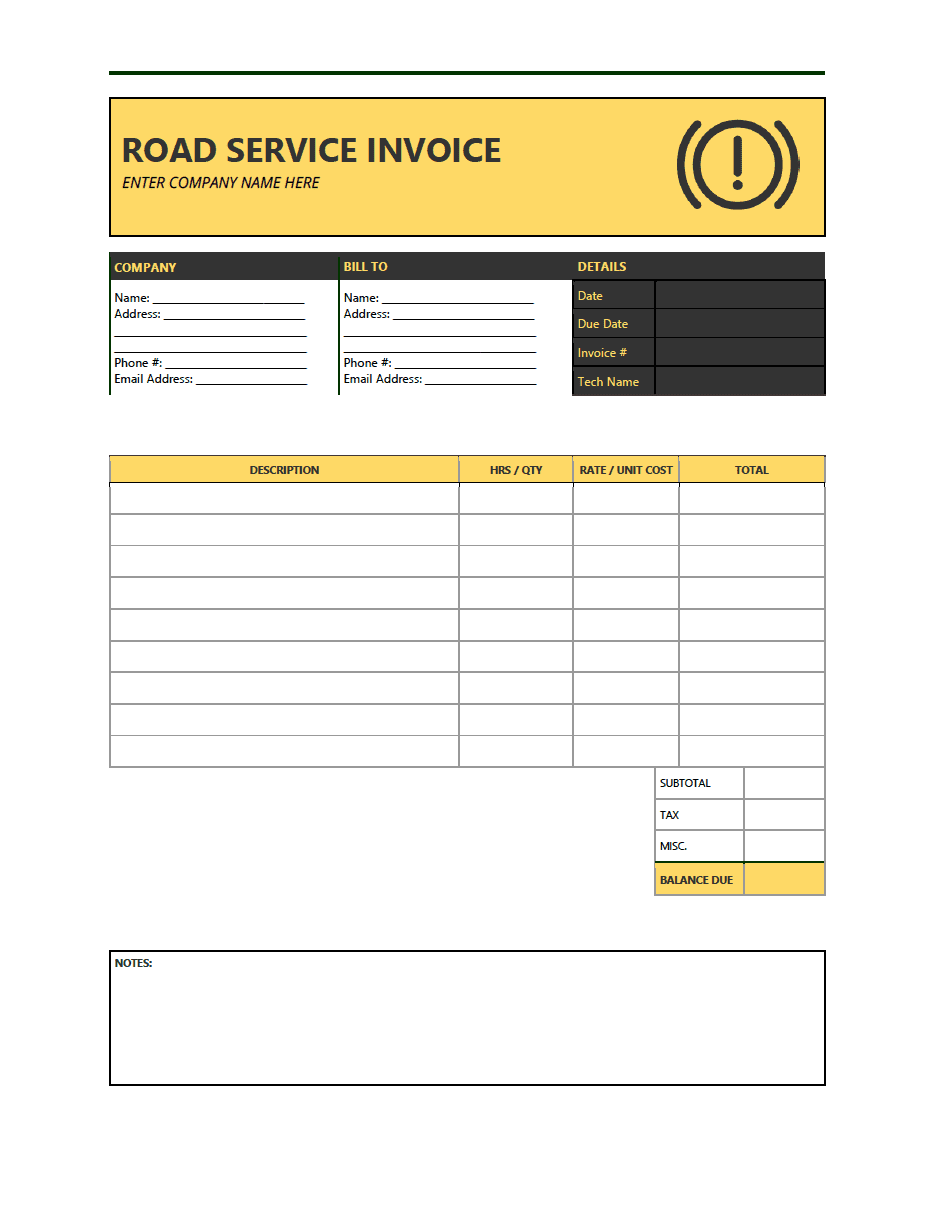Road Service Invoice Template
A road service invoice is a digital or printed document provided to vehicle owners after they received road-side services. The form shows the total bill for the services, the name of the technician/driver, and a breakdown of each job. Optional information includes the date and time of service, the due date for payment, an invoice number, and accepted payment methods.
Can be used for:
- Dead battery services
- Tire changes
- Lockouts
- Fuel delivery, and
- More.
What does Road Service Cover?
Road service covers motorists who are experiencing a variety of emergency-type problems on the road to their destination. Roadside service is meant as a quick fix to get you and your vehicle to your destination. Roadside service does not offer comprehensive service, and you still might need to take your car into the shop to get it fixed completely once you are rescued from the side of the road.
There are many services that roadside assistance covers, and these are designed to get you on the way quickly and solve your immediate need. Roadside service will fix flat tires, jump-start your battery, unlock the car doors if you lock your keys inside, bring you gasoline if you run out, or tow your car to a shop if all else fails. In general, they can offer any quick fix to get you moving and back on your journey.
Average Cost of Road Service
There are three ways to get roadside assistance in your time of need. One way is to be prepared for difficult moments in advance by tacking the cost of an emergency roadside service onto the cost of your automobile insurance. If you have Progressive or Geico insurance, there is a nominal fee, usually between 16-25 dollars a year. This service covers the main reasons for calls, such as keys locked in, flat tire, or dead battery.
The second way to pay for your emergency road service is to subscribe to a yearly subscription, such as AAA. The average cost of this yearly service is 38-78 dollars a year. The nice thing about AAA is that there are other services attached to the program besides just the emergency roadside service. First, they offer more comprehensive help for your vehicle, and secondly, they also offer travel help and other perks like maps. Both of the first two plans cover you for a whole year, no matter where you are. If you have an older car, these programs give you the peace of mind that you will have the help you need if you break down or get a flat tire.
The third way to pay is to pay out of pocket if you happen to need the service. This is known as pay-per-use. For example, a tow will generally cost you between $75-125 dollars, depending on the distance and time of day. If you run out of gas, apps like HONK would bring you some to get by, starting at $49. If you have locked yourself out of your car, a locksmith will generally charge $60-85 dollars to get back in. If you do the math, you can see that actually a road service subscription or adding the roadside assistance to your car insurance is a more economical way to ensure that you always have the help that you need.
How to Bill for Road Service
Road service businesses will send an invoice to collect payment for services. If your roadside service is part of your insurance, paying for it is also part of your insurance payment. Businesses like AAA will bill you in advance, and often cut you a deal if you pay for 2 or 3 years at a time. Finally, if you are stranded on the side of the road and call a roadside service, they will hand you the bill when they get your car going again. You will usually have the option to send the payment in or pay with a credit card over the phone. No matter how you choose to pay, you will be happy to get back on the road to your destination.
